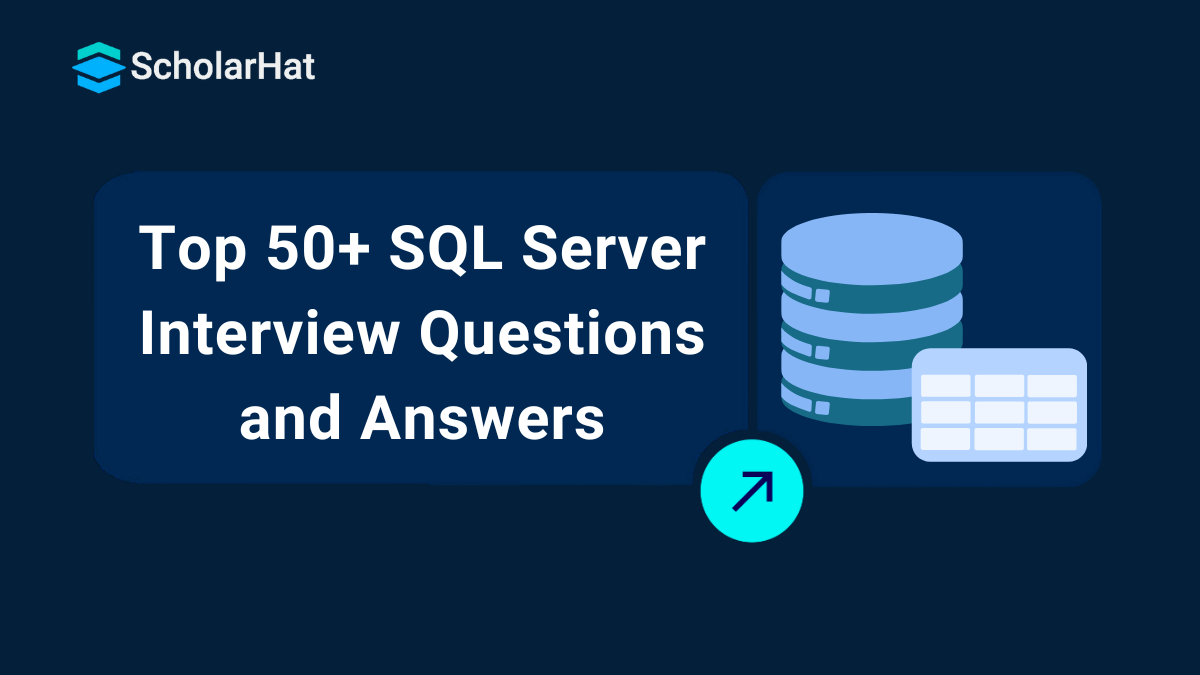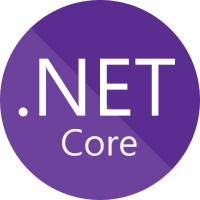26
DecSQL Server Interview Questions and Answers for Freshers & Experienced
SQL Server Interview Questions In a Nutshell
| Experience Level | Topics |
| SQL Server Interview Questions for Beginners |
|
| SQL Server Interview Questions for 3 Years of Experience |
|
| SQL Server Interview Questions for 5 Years of Experience |
|
| SQL Server Interview Questions for 10 Years of Experience |
|
SQL Server Interview Questions for Beginners
When preparing for SQL interviews as a beginner, you will anticipate questions that will test your mastery of essential SQL basic concepts. Basic SQL queries, SQL commands such as SELECT, INSERT, UPDATE, and DELETE, table joining using JOIN types, and data filtering using WHERE, GROUP BY, and HAVING are all common subjects. Interviewers may also ask about your expertise in database normalization, indexing, and subqueries. Practicing these topics can help you develop a solid basis for answering questions efficiently.Q.1. What is an SQL Server?
Microsoft SQL Server is a Relational Database Management System (RDBMS) developed by Microsoft. It is designed to run on a central server so that multiple users can access the same data simultaneously. Generally, users access the database through an application.
Q.2. What are the different versions of SQL Server?
The following versions of SQL Server have been released at the time of writing this book:
- VersionYearRelease Name8.02000SQL Server 20008.02003SQL Server 2000 (64-bit)9.02005SQL Server 200510.02008SQL Server 200810.52010SQL Server 2008 R211.02012SQL Server 201213.02016SQL Server 2016
Q.3. What new features are coming to SQL Server 2019?
At the time of writing this book, SQL Server 2019 RTM was not released. The following features are coming in the SQL Server 2019 release.
- The single virtual data layer
- Data virtualization and Integrating Data
- No data replication and managing all data
- Spark Built-In
- Unified platform for big data analytics
- Spark jobs
- Train machine learning models
Q.4. Can you access or query a remote SQL Server database from a Mac, Linux, or Ubuntu machine?
Yes, youcan usethe AzureData Studio tool to connect to or queryyour remoteSQL Server databasefrom yourMac, Linux, or Ubuntu machines.
Q.5. What is Azure Data Studio?
Azure Data Studio is an alternative way to SQL Server Management Studio (SSMS), which you can run only on Windows machines to query, edit, and perform data development tasks. AzureData Studio offers a modern editor experience to connect with a remote SQL Server database. It helps us to query and manage data across multiple sources with IntelliSense.
Q.6. What is the difference between DBMS and RDBMS?
DBMS and RDBMS are both used to store, manage, and query the data. But both have some important differences as listed below:
- DBMS (Database Management System)RDBMS (Relational Database Management System)DBMS stands for Database Management System and treats data as files internally.RDBMS stands for Relational Database Management System and treats data as relations, meaning tables.It defines the relationship between the files programmatically.It defines the relationship between the relations called tables at the time of table creation.It does not impose any constraints or security concerning data manipulation.It imposes constraints or security on data manipulation.It does not support distributed architecture.It supports distributed architectureIt does not support Client-Server architectureIt supports Client-Server ArchitectureOnly one user can access data at a timeMultiple users can access the data at the same timeIt satisfies a maximum of 6 to 7 rules of E.F. Codd (Edgar Frank "Ted" Codd) out of 12 rules.It satisfies more than 6 to 7 rules of E.F. Codd out of 12 rules.Example: File System, XML, FoxPro, IMSExample:SQL Server, Oracle, DB2, MySQL
Q.7. What is Normalization?
Normalization or data normalization is a process to organize the data into a tabular format (database tables) keeping two goals in mind.
- Reducing data redundancy.
- Ensuring data dependency.
A good database design includes normalization, without normalization, a database system may be slow, inefficient, and might not produce the expected result. Normalization reduces data redundancy and inconsistent data dependency.
Q.8. What are the different Normal Forms?
We organize the data into database tables by using normal form rules or conditions. Normal forms help us to make a good database design. There are the following normal forms:
- First Normal Form (1NF)
- Second Normal Form (2NF)
- Third Normal Form (3NF)
- BCNF
- Fourth Normal Form (4NF)
- Fifth Normal Form (5NF)
Generally, we organize the data up to the third normal form. We rarely use the fourth and fifth normal forms.
Q.9. What are the differences between char and nchar?
This data type is used to store characters, but these are different in many cases as given below:
1. char
2. nchar
Q.10. What are the differences between varchar and nvarchar?
There are the following differences between varchar and nvarchar:
1. varchar
2. nvarchar
Q.11. What is an SQL key?
A key is a single field or a combination of multiple fields in a table. It is used to retrieve records or data rows from the data table based on the condition. SQL Keys are also used to create a relationship among different database tables or views.
Q.12. What are the different types of SQL Keys?
There are the following types of SQL Keys:
Super Key - The superkey is a set of one or more than one key that can be used to identify a record uniquely in a table.d
For Example, the Primary key, Unique key, and Alternate key are a subset of Super Keys.Candidate Key - A Candidate Key is a set of one or more fields/columns that can uniquely identify a record in a table. There can be multiple Candidate Keys in one table. Each Candidate Key can work as a Primary Key.
For Example, in the diagram below, ID, RollNo, and EnrollNo are Candidate Keys since all three fields can work as a Primary Key.Primary Key -The primary key is a set of one or more fields/columns of a table that uniquely identify a record in a database table. It cannot accept null, or duplicate values. Only one Candidate Key can be the Primary Key.
Alternate key - An alternate key is a key that can work as a primary key. It is a candidate key that is currently not the primary key.
For Example, in the diagram below, RollNo and EnrollNo become Alternate Keys when we define ID as the Primary Key.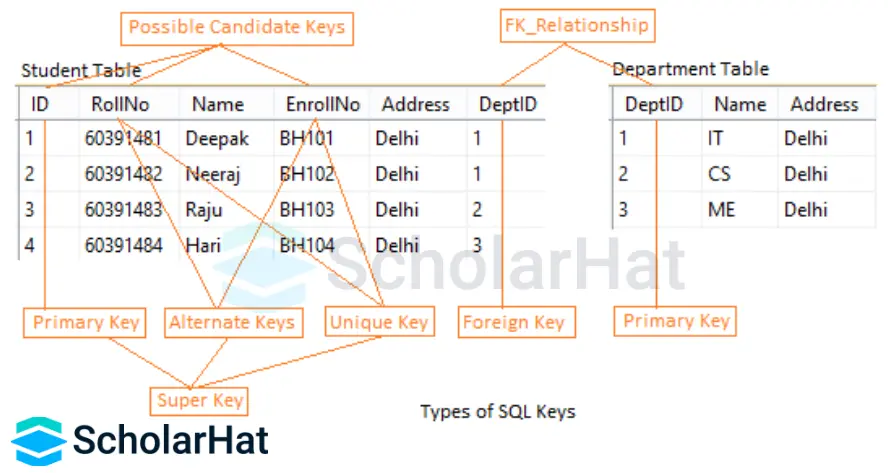
Composite/Compound Key: A Composite Key is a combination of more than one field/column of a table. It can be a Candidate key or a primary key.
Unique Key: The unique key is a set of one or more fields/columns of a table that uniquely identifies a record in a database table. It is like a Primary key, but it can accept only one null value and it cannot have duplicate values.
Foreign Key :A Foreign Key is a field in a database table that is the Primary key in another table. It can accept multiple null values, and duplicate values.
For Example, we can have a DeptID column in the Employee table, which is pointing to the DeptID column in the department table, where it is a primary key.Note: Practically in the database, we have only three types of keys, Primary Key, Unique Key, and Foreign Key. Other types of keys are only concepts of RDBMS that we need to know.
Q.13. What are SQL Commands?
SQL commands are a set of instructions that are used to interact with the database, like SQL Server, MySQL, Oracle, etc. SQL commands are responsible for creating and performing all the manipulations on the database. These are also responsible for giving or taking out access rights on a particular database. There are the following types of commands:
- Data Manipulation Language (DML)
- Data Query Language (DQL)
- Transaction Control Language (TCL)
- Data Control Language (DCL)
Q.14. What is a Database Table?
An RDBMS stores the data using a database table. A database table manages the data in row and column format. Each row in a table has its primary key, which uniquely identifies that row or record. The data associated with tables is physically stored in the database memory.
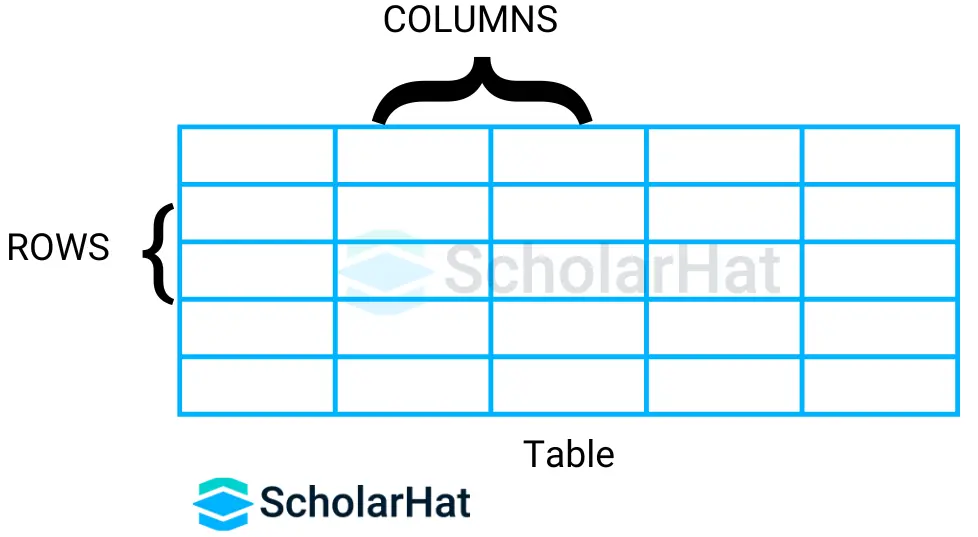
Q.15. What is a transaction?
A transaction is a set of T-SQL statements that are executed together as a unit like a single T-SQL statement. If all of these T-SQL statements are executed successfully, then a transaction is committed, and the changes made by T-SQL statements are permanently saved to the database. If any of these T-SQL statements within a transaction fail, then the complete transaction is cancelled/ rolled back.
Q.16. Why use transactions in SQL Server?
We use that case when we try to modify more than one table or view that is related to each other. Transactions affect SQL Server performance greatly. Since, a transaction is initiated, it locks all the tables’ data that are used in the transaction. Hence, during the transaction life cycle, no one can modify the data in these tables that are used by the transaction. The reason behind the locking of the data is to maintain Data Integrity.
Q.17. What are the different types of transactions in SQL Server?
There are the following types of transactions in SQL Server as given below:
- Implicit Transaction
- Explicit Transaction
SQL Interview Questions for 3-5 Years of Experience
Q.18. Write SQL queries to get the nth highest and lowest salary of an employee.
The queries are given below-
Query to get the nth (3rd) highest Salary:
Select TOP 1 Salary as '3rd Highest Salary' from (SELECT DISTINCT TOP 3 Salary from Employee ORDER BY Salary DESC) a ORDER BY Salary ASCQuery to get nth (3rd) lowest Salary:
Select TOP 1 Salary as '3rd Lowest Salary' from (SELECT DISTINCT TOP 3 Salary from Employee ORDER BY Salary ASC) a ORDER BY Salary DESC
Q.19. Write an SQL query to get the field name, data type, and size of a database table.
The query is given below:
SELECT column_name as 'Column Name', data_type as 'Data Type', character_maximum_length as 'Max Length' FROM information_schema.columns WHERE table_name = 'tblUsers'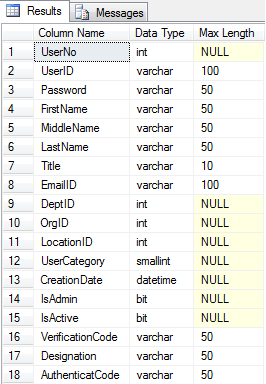
| Read More: SQL Server Hands-On Labs |
SQL joins are used to retrieve data from two or more data tables, based on a join condition. A join condition is a relationship among some columns in the data tables that take part in an SQL join. In SQL Server, there are three types of joins as given below:
- Inner Join
- Outer Join
- Cross Join
| Read More: Top SQL Joins Interview Questions |
Q.21. Explain different data types in SQL Server.
The various data type classifications are as follows:
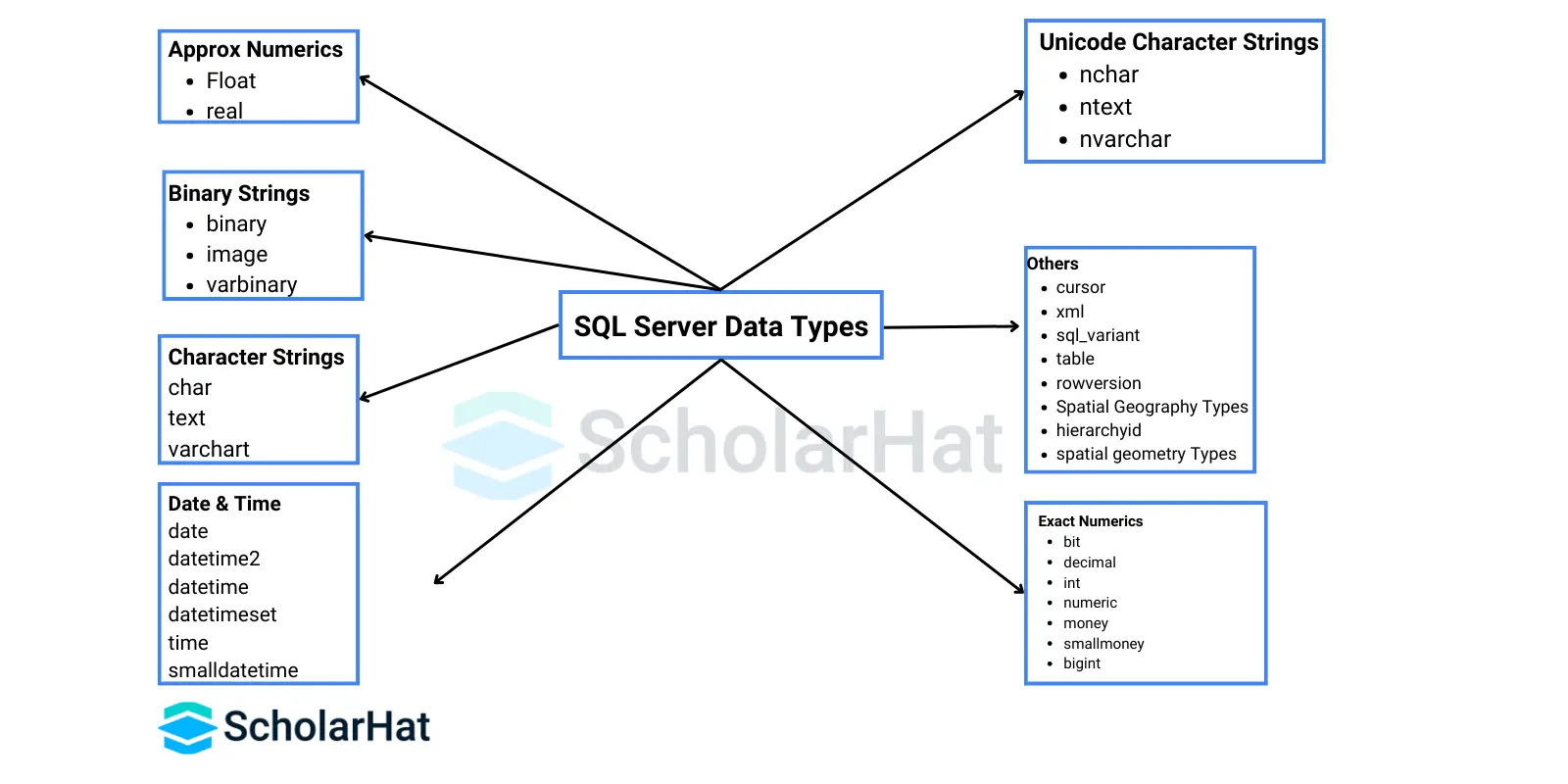
Q.22. Define DDL Statements in SQL Server.
A type of SQL command called DDL (Data Definition Language) is used to define data structures and alter data. Tables, views, indexes, and users are just a few of the database objects that it may create, modify, and remove. DDL statements include concepts like CREATE, ALTER, DROP, and TRUNCATE.
Q.23. Explain DML Statements in SQL Server.
Data Manipulation Language is shortened to DML. consists of a group of computer languages that are specifically used to alter databases using CRUD activities (create, read, update, and delete data). Use the commands INSERT, SELECT, UPDATE, and DELETE.
Q.24. What are DCL Statements in SQL Server?
A subset of SQL commands called Data Control Language (DCL) is used to manage who has access to what data in a database. In multi-user database setups, in particular, DCL plays an essential part in guaranteeing security and appropriate data management. It includes GRANT & REVOKE
Q.25. What are the functions in SQL Server?
Database objects known as SQL Server functions comprise a collection of SQL statements that work together to carry out a certain task. A function receives input, processes it, and outputs the result. It is important to remember that functions always return a table or a single result.
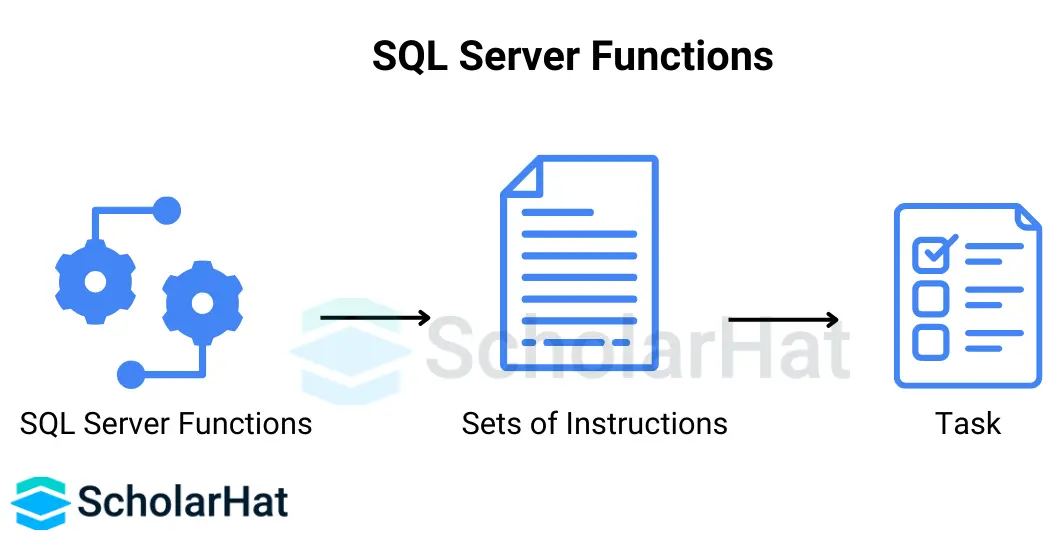
Q.26. Define Views in SQL Server.
In SQL Server, a VIEW is comparable to a virtual table that holds information from one or more tables. It does not physically exist in the database and does not contain any data. A view name in a database should be unique, much like a SQL table. It includes a list of pre-written SQL queries to retrieve information from the database.
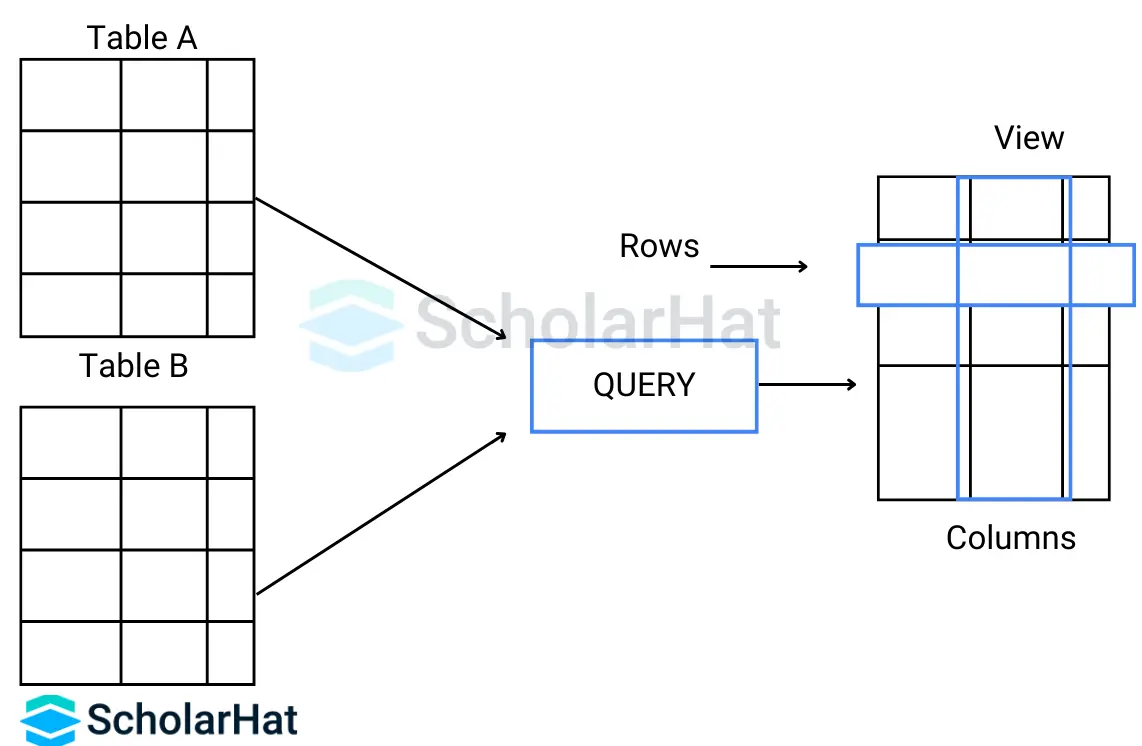
Q.27. What are indexes in SQL Server?
The table or view's columns can be used as building blocks for keys in an index. Because these keys are kept in a structure called a B-tree, SQL Server can locate the row or rows that are connected to the key values with speed and efficiency.
Q.28. Explain the Stored Procedure.
An SQL code that has been prepared and saved for later use is called a stored procedure. To avoid writing the same SQL query twice, consider saving it as a stored procedure that can be called whenever needed. A stored procedure can also receive parameters, which allows it to take action based on the parameter value or values that are supplied.
Q.29. What do SQL Server triggers do?
You can designate SQL operations that should be carried out automatically when a particular event takes place in the database by using an SQL trigger. A trigger, for instance, can be used to update a record in one table automatically each time a record is added to another table.
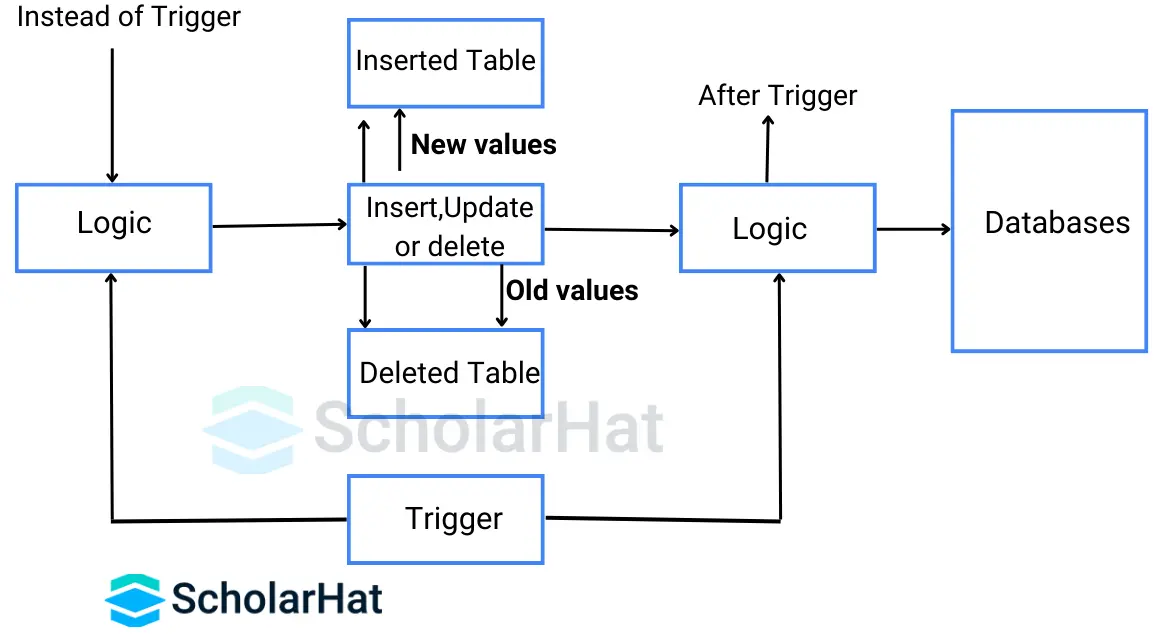
Q.30. What do SQL Server cursors mean?
In SQL Server, a cursor is a database object that lets us access and modify individual rows one at a time. All that a cursor is is a pointer to a row. It is always utilized with a SELECT statement attached.
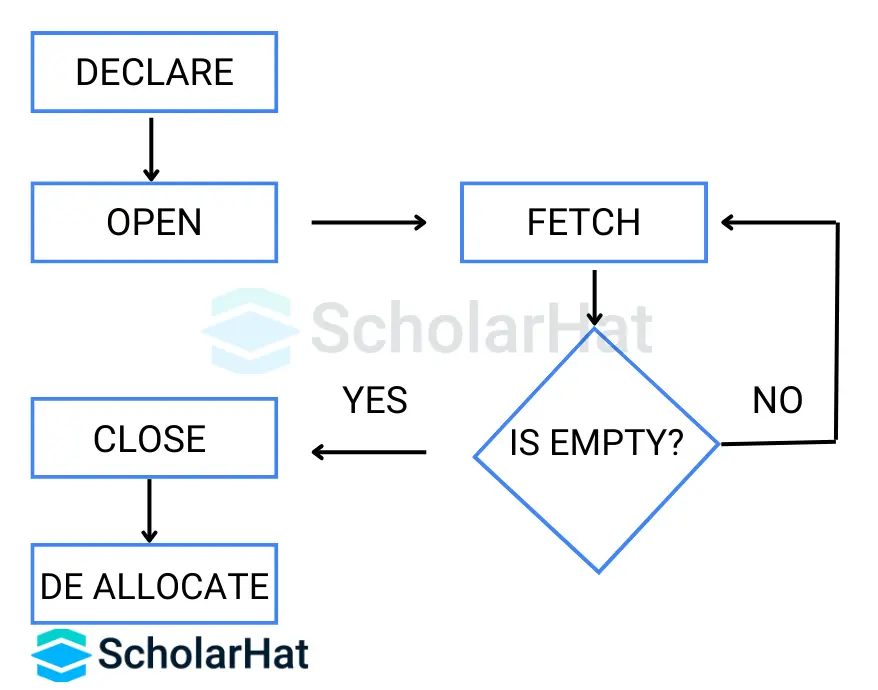
Q.31. What is security in SQL Server?
Data can be shielded from unauthorized access using SQL security. Users can only access the features or capabilities they need. A whole database instance, a table, and a database are the three security levels you can select when setting up a SQL Server.
Q.32. What does SQL Server authentication mean?
Authentication with SQL Server works similarly. Users connect to the database, which verifies details like port number, domain and instance names, and user account credentials.
Q.33. What is SQL Server auditing?
Monitoring and recording system events is a necessary part of auditing a SQL Server server or database. A single instance of server-level or database-level activities, as well as sets of actions, are gathered by the SQL Server Audit object for monitoring. The SQL Server instance level is being audited.
Q.34. What does SQL Server backup and recovery mean?
In general, backup and recovery refer to the several approaches and procedures used to safeguard your database from data loss and restore the data if it does occur.
Q.35. Explain replication in SQL Server.
A group of technologies known as replication is used to copy and distribute database objects and data from one database to another, synchronizing afterward to preserve consistency across databases. Replication can be used to send data over dial-up, wireless, local, and wide area networks, the Internet, and other networks to users who are remote or mobile.
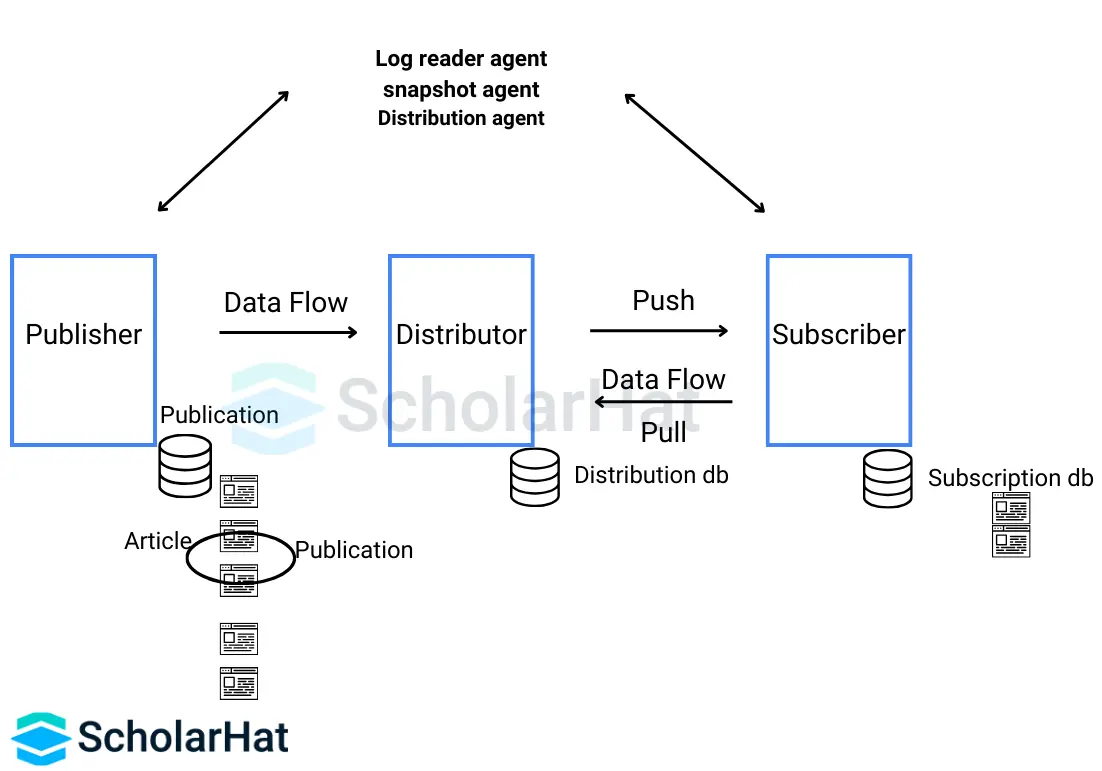
| Read More: Free SQL Server Online Course with Certificate - Start Today |
SQL Server Interview Questions for 10 Years of Experience
Preparing for SQL Server interview questions with 10 Years of Experience is critical because these questions frequently measure your ability to manipulate and analyze data efficiently. SQL queries, joins, aggregations, subqueries, and data types are examples of commonly covered subjects. You may also be asked scenario-based questions that need you to exhibit problem-solving abilities using SQL. Familiarity with functions such as 'SUM()', 'COUNT()', and 'GROUP BY', as well as comprehension of database design concepts, will considerably improve your confidence and performance during these interviews.
Q36. Describe SQL Server clustered indexes.
Based on their key values, clustered indexes sort & store the data rows in the table or view. The columns that make up the index definition are these key values. Because the data rows themselves can only be stored in a single order, each table can only have one clustered index.
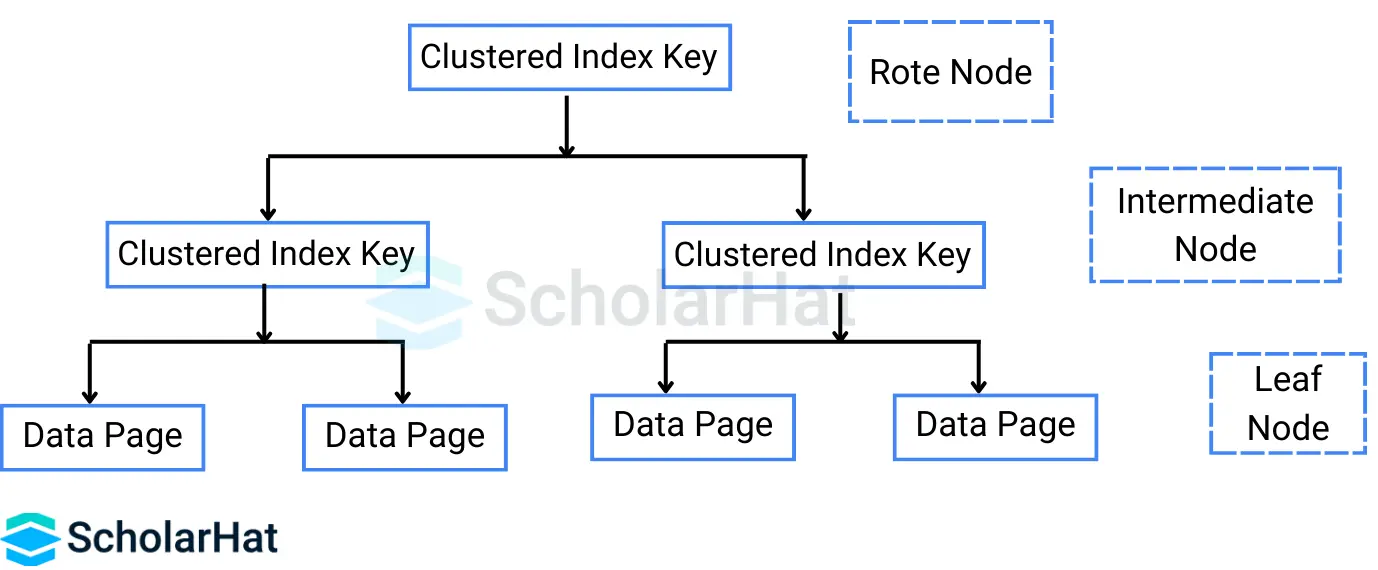
Q37. What are non-clustered indexes in SQL Server?
Search processes are also speeding up by using a non-clustered index. A non-clustered index does not physically specify the sequence in which records are added to a table, unlike a clustered index. In actuality, the data table and the non-clustered index are kept apart.
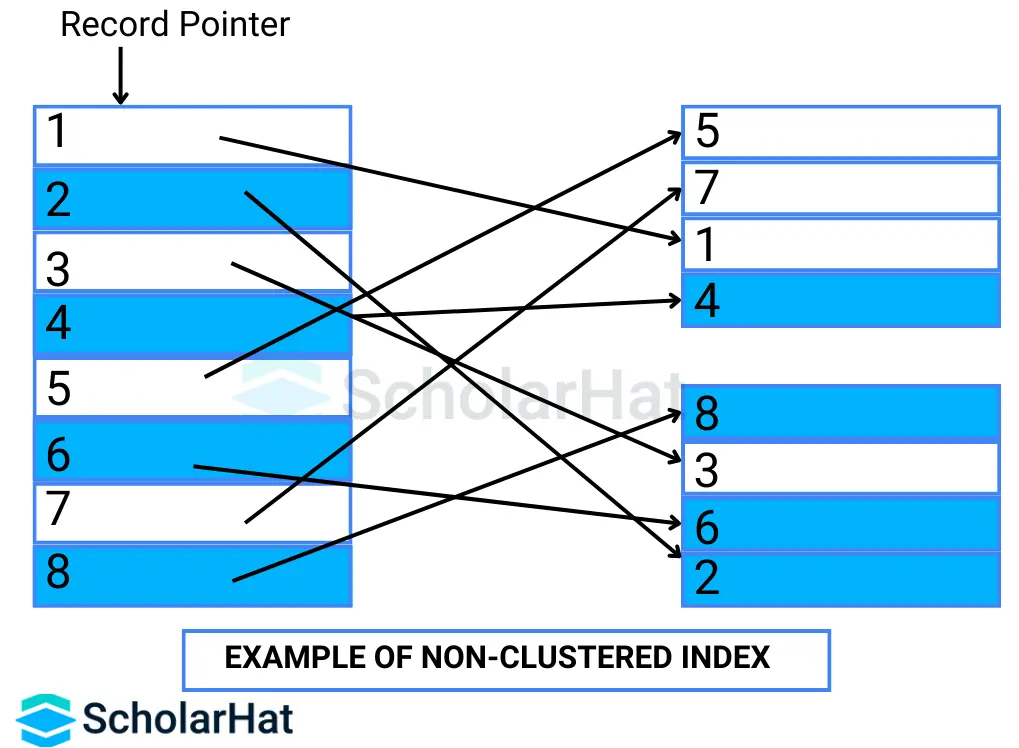
Q38. What are unique indexes in SQL Server?
An index that guarantees that the values in the indexed columns are distinct throughout the table is known as a unique index in SQL Server. This indicates that the values in the columns that comprise the unique index cannot be the same in two rows.
Q39. What is query optimization in SQL Server?
Query optimization is the practice of improving SQL queries to minimize resource usage, speed up system execution, and enhance overall system performance. The main goals of this optimization are to reduce pointless data retrieval, streamline join processes, and make better use of available resources.
Q40. What is an execution plan in SQL Server?
The set of instructions known as the SQL Server execution plan, or query plan, specifies the steps that must be taken for the database engine to carry out a query. The primary objective of the query optimizer, which creates the query plans, is to produce the most inexpensive and efficient query plan.
Q41. Can you define all the keys in a database table?
Practically in a database table, you can have only three types of keys: Primary Key, Unique Key, and Foreign Key. Other types of keys are only concepts of RDBMS that you need to know.
Q42. What are the differences between the Primary Key and the Unique Key?
| Primary Key | Unique Key |
| Primary Key can't accept null values. | The unique key can accept only one null value. |
| By default, the Primary key is a clustered index, and data in the database table is physically organized in the sequence of a clustered index. | By default, the Unique key is a unique non-clustered index. |
| You can have only one Primary key (it may be a composite primary key, which means a key on multiple fields) in a table. | You can have more than one unique key in a table. |
| The primary key can be made a foreign key in another table. | In SQL Server, a Unique key can be made a foreign key in another table. |
| Read More: Differences between Primary Key and Foreign Key |
Q43. What are TCL Commands?
Q44. What are DQL Commands?
Q45. What are the Grant and Revoke Commands?
- Grant Command: This command is used to permit specific users on specific database objects like tables, views, etc.
- Revoke Command: This command is used to take out permission from specific users on specific database objects like tables, views, etc.
Q46. What are SQL Constraints or SQL Integrity Constraints?
- Column Level: These constraints are defined with the column definition inside a CREATE TABLE statement.
- Table Level: These constraints are defined after the table is created using the ALTER TABLE statement.
Q47. What is the need for a SQL view?
Q48. What are Simple View and Complex View?
- Simple View - When we create a view on a single table, it is called a simple view. In a simple view, we can insert, update, and delete data. We can only insert data in a simple view if we have a primary key and all not null fields in the view.
- Complex View - When we create a view on more than one table, it is called a complex view. We can only update data in the complex view. We can't insert or delete data in the complex view.
Q49. What are the different types of SQL Server Views?
- Simple View
- Complex View
Q50. What are table partitioning strategies in SQL Server?
Table partitioning in SQL Server is a way to divide a large table into smaller, more manageable pieces called partitions. This improves performance and makes data easier to manage. Here are the main partitioning strategies.
- Range Partitioning:Data is divided based on a range of values. Example: A sales table partitioned by year (2020, 2021, 2022, etc.).
- List Partitioning:Data is divided based on a specific list of values.Example: A table partitioned by region (North, South, East, West).
- Hash Partitioning:Data is divided using a hash function to distribute rows evenly across partitions. Useful when there is no natural range or list for partitioning.
- Composite Partitioning:Combines two or more partitioning methods. Example: A table partitioned first by region (list) and then by year (range).
Partitioning helps improve query performance, create faster backups, and make data maintenance easier.
Q51. How does indexing impact query performance?
- Speeds Up Searches:Indexes act like a table of contents in a book, allowing the SQL Server to find data quickly instead of scanning the entire table.
- Reduces I/O Operations:Without an index, theSQL Server scans every row (full table scan). With an index, it only looks at the relevant rows, reducing disk reads.
- Helps with Sorting & Filtering:Indexes help with ORDER BY, GROUP BY, and WHERE clauses, making sorting and filtering much faster.
- Improves Joins:When tables are joined, indexed columns help match records quickly, improving performance.
- Supports Uniqueness:A unique index ensures that no duplicate values exist, improving data integrity.
Get interview-ready with SQL Server Q&A
Read More: SQL Server Interview Q&A Ebook |
Q52. What are database deadlocks, and how can they be resolved?

Q53. What are SQL Server isolation levels for concurrency control?
- Read Uncommitted:The fastest but least safe. Transactions can read uncommitted data (dirty reads).
- Read Committed (Default):Transactions only read committed data, preventing dirty reads but allowing non-repeatable reads.
- Repeatable Read:Prevents dirty reads and non-repeatable reads by holding locks on read data until the transaction ends.
- Serializable:The strictest level, preventing dirty reads, non-repeatable reads, and phantom reads by locking the entire data set.
- Snapshot:Uses row versions instead of locks, allowing transactions to read consistent data without blocking others.
Q55. What are the best practices for optimizing transaction logs in SQL Server?
- Choose the Right Recovery Model:Simple for minimal logging, Full for recovery, Bulk-Logged for bulk operations.
- Take Regular Log Backups:Prevents excessive log growth in Full and Bulk-Logged modes.
- Monitor Log File Size:Set proper initial size and auto-growth settings.
- Store Logs Separately:Improves performance and avoids I/O bottlenecks.
- Avoid Long Transactions:Split large transactions to reduce log file size.
- Use Checkpoints:Flush committed data to free log space.
- Avoid Frequent Shrinking:Prevents fragmentation and performance issues.
- Optimize Indexes & Queries:Reduces excessive logging for better efficiency.
I hope these questions and answers will help you crack your SQL Server Interview. They’ve been carefully selected from our newly released eBook, SQL Server Interview Questions & Answers, which features over 100+ SQL interview questions. This book is designed to build a solid foundation in SQL Server, making you more confident whether you're preparing for interviews or working on real-world projects. It's a great way to turn your programming interest into a professional skill.
Full-Stack .NET Developers earn up to ₹35 LPA in India’s tech boom. Kickstart your high-paying career with our full stack .NET developer course today!
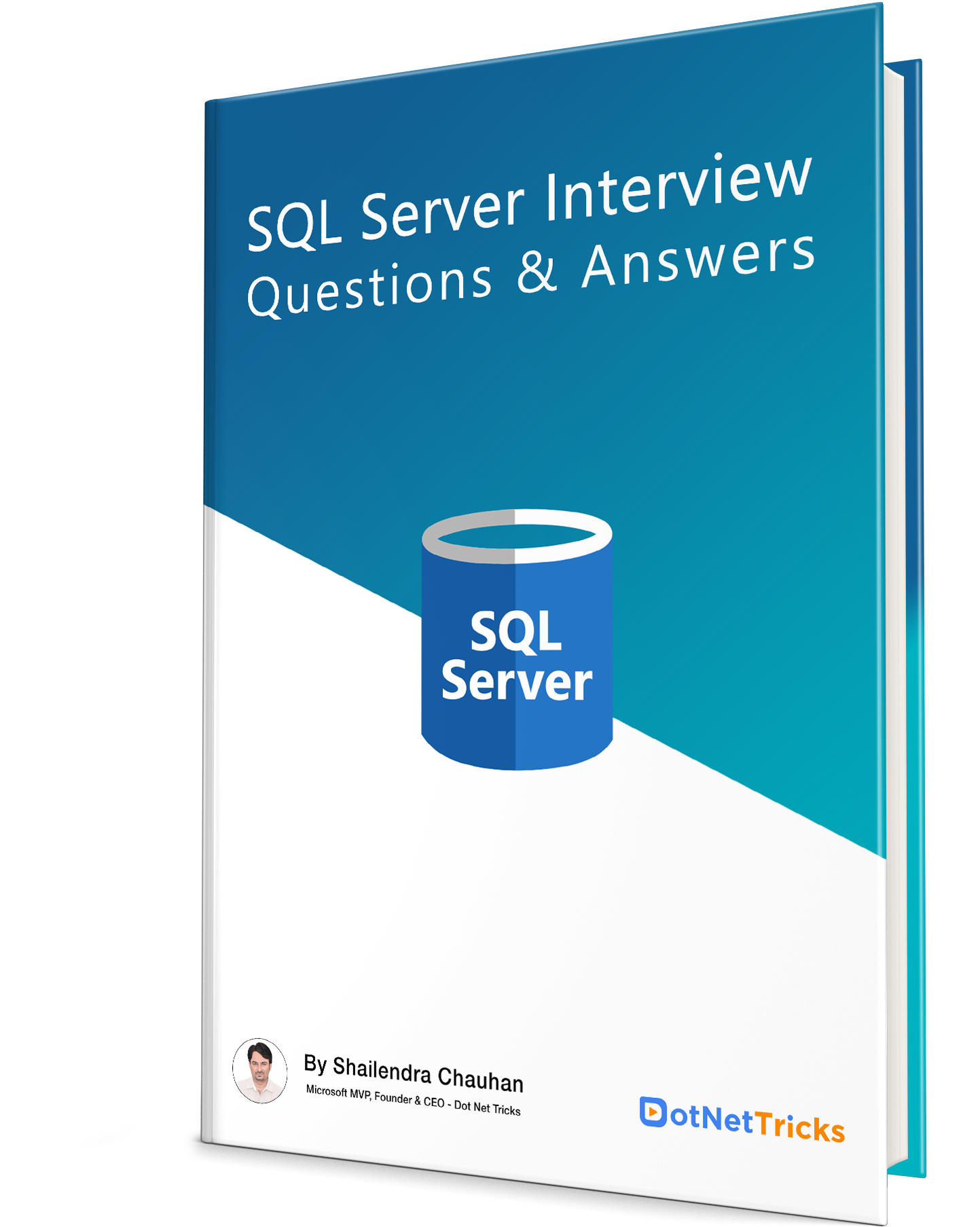
Let the quiz begin! Pick the right answers and climb to the top!
Q 1: Which SQL statement is used to retrieve data from a database?
FAQs
- Restate the question to ensure you understand what you're asked to do.
- Explore the data by asking questions.
- Identify the columns you'll need to solve the problem.
- Think about what your answer should look like.
- Write your code one step at a time.
- Explain your solution as a whole.
- DDL – Data Definition Language.
- DQL – Data Query Language.
- DML – Data Manipulation Language.
- DCL – Data Control Language.
- TCL – Transaction Control Language
Take our Sqlserver skill challenge to evaluate yourself!

In less than 5 minutes, with our skill challenge, you can identify your knowledge gaps and strengths in a given skill.

